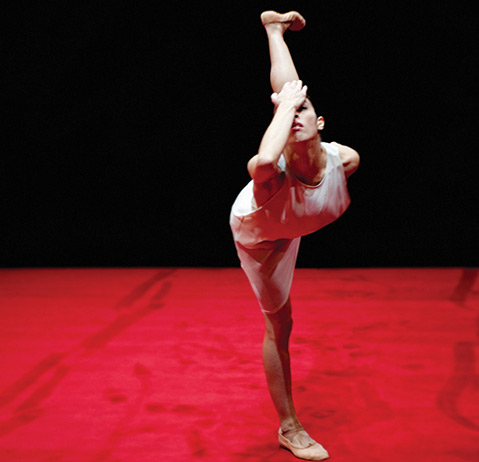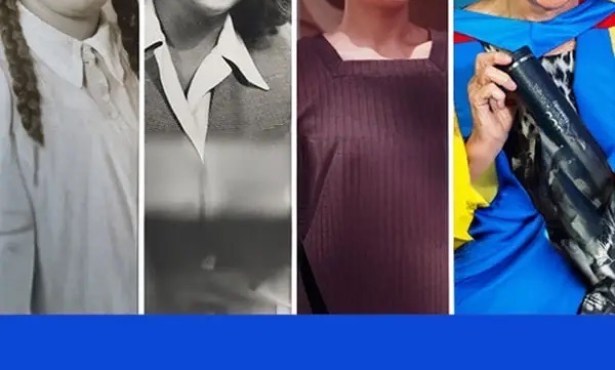Review: Nederlands Dans Theater 2 at the Granada Theatre
UCSB’s Arts & Lectures Presented This Organic, Complex Work on February 24

The first Nederlands Dans Theater 2 (NDT2) appearance on Santa Barbara turf since 2003 opened with Johan Inger’s I New Then. A stand of upright metal bars arced up stage left and across the rear of the stage. Two men began the evening with a cool, curvy duet performed in silence.
Dressed in neutrally hued, pedestrian clothes, the rest of NDT2’s gorgeous young dancers (all under the age of 24) were added to the mix. Accompanied by a medley of Van Morrison tunes, they ran, lunged, rolled, spun, gestured, and lifted and carried one another. In one section, a man and woman engaged in a charming duet that ended in a slow, methodical disrobing. A single male dancer went through serious personal drama about that dalliance, including an emotional gibberish monologue and gestures: a physical and vocal tour de force of jealous insanity or misplaced prudery, periodically amplified by the lovers’ absentminded tossing of garments directly in his path or onto his body.
The second work, Shutters Shut, was Paul Lightfoot and Sol Léon’s four-minute movement tribute to poet Gertrude Stein. The two young dancers who performed the work were flawless in their precision, unison, and interconnection. Costumed in black (his front, her back) and cream (his back, her front), the dance precisely reflected the quirky musicality of the poem “If I Told Him: A Completed Portrait of Picasso” (1923), with movements assigned to each word, repeated as the incantation of the poem, a recording of Stein herself reading it, looped along. This reviewer and her companion felt as though we’d held our breath for the full four minutes the piece took to traverse the front lip of the stage.
One of the choreographers of Sara, the third work on the program, Sharon Eyal danced with Batsheva Dance Company for 18 years. The piece’s riveting, weird otherworldliness reminded me of Batsheva’s aesthetic. To a whispery, ominous soundscape, including an original composition by Ori Lichtik and “From Off to On” by The Knife, a group of dancers moved in a standing group down right while a soloist moved at center in a spotlight. All wore flesh-colored unitards. The movement was subtle and (as one expects with NDT2) incredibly precise: robotic and sinuous gestures, subtle turns of the head, facial expressions, punctuated at one point by a magnificent second-position développé from one female dancer—the danciest part of the hypnotic dream world created by Eyal and her partner, Gai Behar.
The final work,Subject to Change, had the evening’s strongest sense of formal dramatic arc. Six dancers—four men in dark suits lined with red satin, and a male and female duet pair—danced around and on a deep red carpet. The men in suits manipulated the carpet: spinning it with the woman standing at its center, rippling it to trip up the pair as they danced, creating a wall with it to separate the pair from each other, rolling themselves in it, and (in the piece’s final moments) rolling it slowly back up with measured steps and tiny nudges of their toes.
These dancers can glide from one extreme to another with ease and simplicity without losing the sense of weighty effort that distinguishes most of contemporary dance from classical ballet. On Tuesday, that created a show that made perfect organic sense while still being consistently surprising—kind of like the geometries of nature. Through these seeming paradoxes shone the joy and deep character of Nederlands’ movers, each with their own distinct form of grace.



